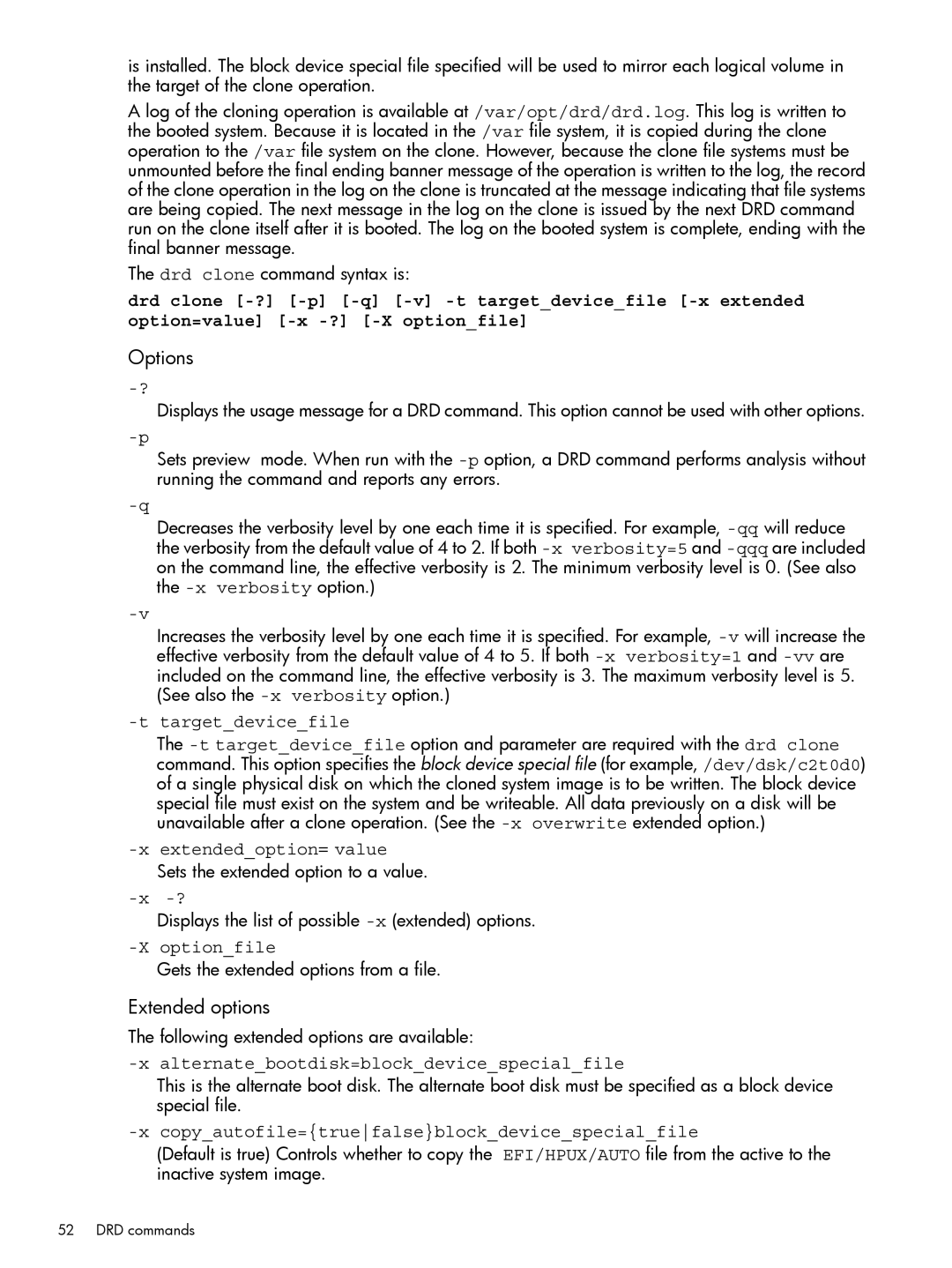is installed. The block device special file specified will be used to mirror each logical volume in the target of the clone operation.
A log of the cloning operation is available at /var/opt/drd/drd.log. This log is written to the booted system. Because it is located in the /var file system, it is copied during the clone operation to the /var file system on the clone. However, because the clone file systems must be unmounted before the final ending banner message of the operation is written to the log, the record of the clone operation in the log on the clone is truncated at the message indicating that file systems are being copied. The next message in the log on the clone is issued by the next DRD command run on the clone itself after it is booted. The log on the booted system is complete, ending with the final banner message.
The drd clone command syntax is:
drd clone
Options
Displays the usage message for a DRD command. This option cannot be used with other options.
Sets preview mode. When run with the
Decreases the verbosity level by one each time it is specified. For example,
Increases the verbosity level by one each time it is specified. For example,
-t target_device_file
The
Sets the extended option to a value.
Displays the list of possible
Gets the extended options from a file.
Extended options
The following extended options are available:
-x alternate_bootdisk=block_device_special_file
This is the alternate boot disk. The alternate boot disk must be specified as a block device special file.
-x copy_autofile={truefalse}block_device_special_file
(Default is true) Controls whether to copy the EFI/HPUX/AUTO file from the active to the inactive system image.
52 DRD commands
